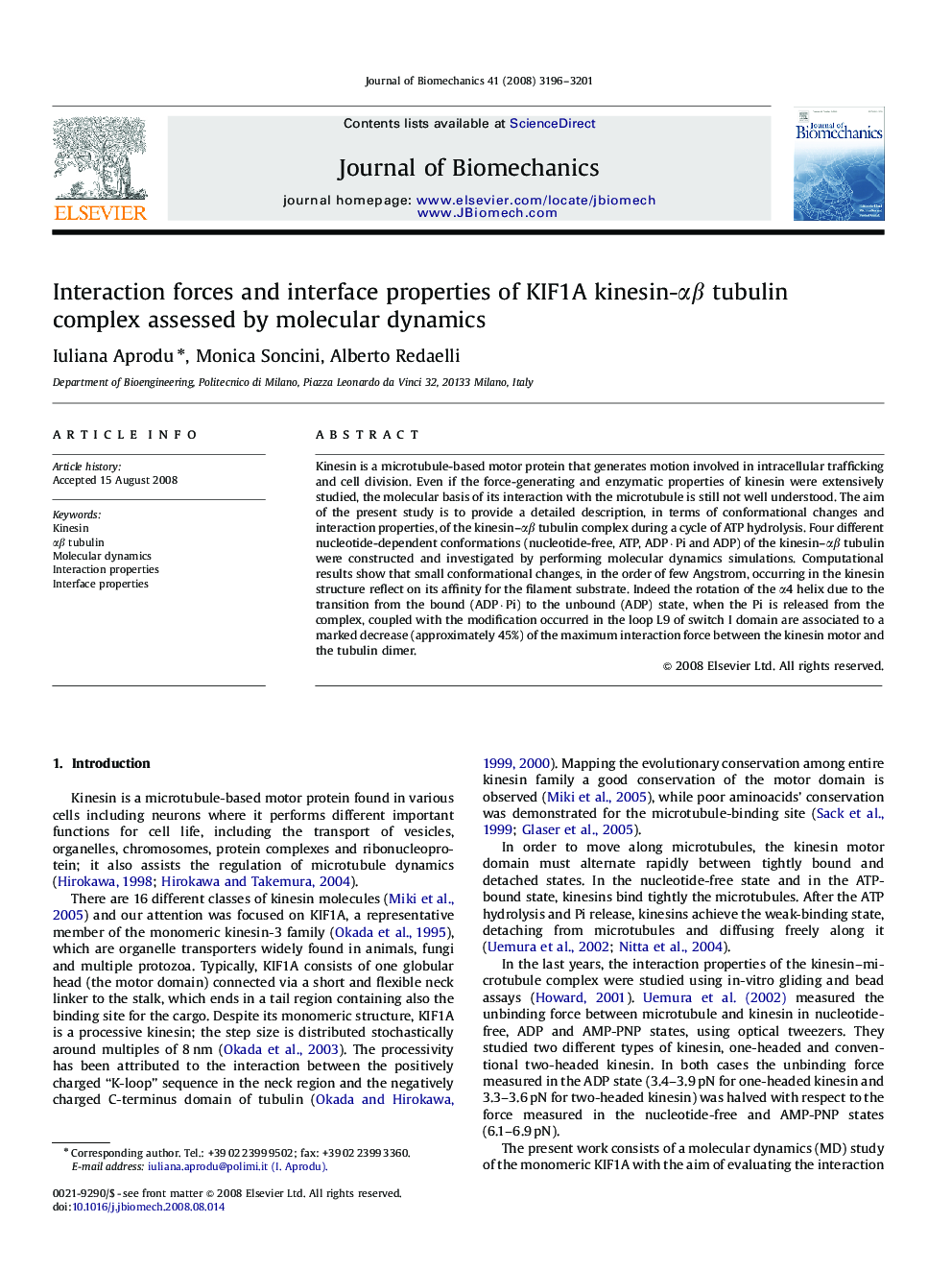| Article ID | Journal | Published Year | Pages | File Type |
|---|---|---|---|---|
| 873698 | Journal of Biomechanics | 2008 | 6 Pages |
Kinesin is a microtubule-based motor protein that generates motion involved in intracellular trafficking and cell division. Even if the force-generating and enzymatic properties of kinesin were extensively studied, the molecular basis of its interaction with the microtubule is still not well understood. The aim of the present study is to provide a detailed description, in terms of conformational changes and interaction properties, of the kinesin–αβ tubulin complex during a cycle of ATP hydrolysis. Four different nucleotide-dependent conformations (nucleotide-free, ATP, ADP·Pi and ADP) of the kinesin–αβ tubulin were constructed and investigated by performing molecular dynamics simulations. Computational results show that small conformational changes, in the order of few Angstrom, occurring in the kinesin structure reflect on its affinity for the filament substrate. Indeed the rotation of the α4 helix due to the transition from the bound (ADP·Pi) to the unbound (ADP) state, when the Pi is released from the complex, coupled with the modification occurred in the loop L9 of switch I domain are associated to a marked decrease (approximately 45%) of the maximum interaction force between the kinesin motor and the tubulin dimer.
